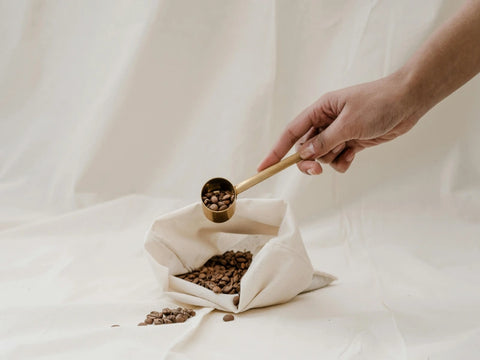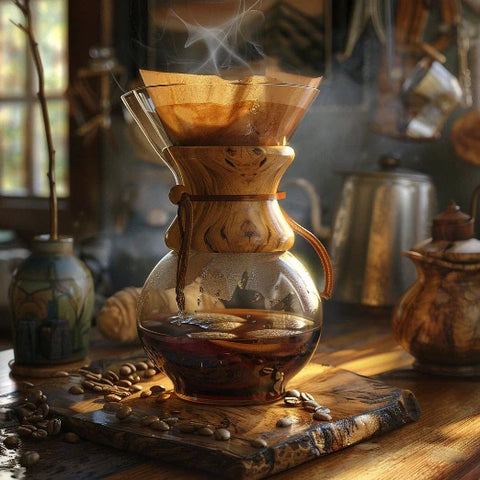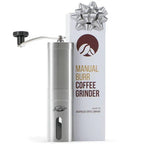Coffee percolation is a method of brewing coffee that involves passing hot water through coffee grounds to extract its flavor and aroma. This process has been around since the 19th century and is still a popular brewing method today. However, the key to a perfect cup of coffee lies in understanding the factors that affect coffee percolation and knowing how long to percolate for the best results.
The process of coffee percolation involves passing hot water through the coffee grounds multiple times, extracting the flavor and essential oils from the beans. This process is dependent on various factors, including grind size, coffee-to-water ratio, water temperature, brewing time, and filter type. These factors can significantly affect the taste, aroma, and strength of your coffee.
The ideal brewing time for coffee percolation varies depending on the brewing method. Here are some guidelines for how long you should percolate coffee using different methods:
- Drip Coffee Maker: 4-6 minutes
- French Press: 4-5 minutes
- Pour Over: 2-4 minutes
- Aeropress: 1-2 minutes
However, the best way to determine the right brewing time is to experiment with different durations and find the perfect balance of flavor and strength that suits your taste.
Read: Perfect Timing How Long to Percolate Coffee
To know when your coffee is done percolating, you can use visual cues such as the color of the coffee or the bubbles forming at the top. The aroma and taste are also essential indicators of a well-percolated coffee.
Over-percolating your coffee can lead to a bitter and over-extracted taste, while under-percolating can result in a weak and under-extracted brew. It is essential to find the right balance to achieve the perfect cup of coffee. With practice and experimentation, you can master the art of timing for a perfect cup of coffee every time.
Key Takeaways:
What Is Coffee Percolation?
Coffee percolation is the brewing process of continuously cycling boiling water through coffee grounds until the desired strength is achieved. The water is heated in a separate chamber and then directed over the coffee grounds, allowing it to absorb the flavors before filtering back down.
Typically lasting 7-10 minutes, this method results in a rich and robust flavor. However, the duration of the percolation process may vary based on individual preferences and the type of coffee beans being used.
How Does Coffee Percolation Work?
Coffee percolation is a straightforward and precise process. Here's how it works:
- Water is heated in the bottom chamber of the percolator.
- The heated water then rises and percolates through the coffee grounds in the top chamber.
- As the water passes through the coffee, it extracts the flavors and oils.
- The brewed coffee then drips back down into the bottom chamber, creating a continuous cycle until the desired strength is achieved.
What Are the Factors That Affect Coffee Percolation?

The perfect cup of coffee is a delicate balance of many factors, one of the most important being the percolation process. But what exactly affects the percolation of coffee? In this section, we will dive into the various factors that can impact the timing of your perfect cup. From grind size to water temperature, we will explore the key elements that play a role in the percolation process and how they can affect the taste and quality of your coffee.
1. Grind Size
Grind size is a crucial factor in the percolation process of coffee. To optimize your coffee's flavor, follow these steps:
- Coarse Grind: This grind size is ideal for percolators because it allows for longer percolation cycles and prevents over-extraction.
- Medium Grind: Suitable for drip coffee makers, this grind size balances extraction and clarity.
- Fine Grind: Perfect for espresso machines, this grind size ensures efficient percolation and a rich flavor.
Experiment with different grind sizes to find your preferred coffee strength and flavor.
2. Coffee-to-Water Ratio
- Begin with a standard coffee-to-water ratio of 1:15 for a well-balanced flavor.
- Try different ratios to find the perfect strength and taste for your coffee.
- For a stronger brew, use a ratio of 1:10, and for a milder flavor, experiment with a ratio of 1:18.
- Take into account the origin and roast level of the coffee beans when determining the ideal ratio for each variety.
3. Water Temperature
- Boil water to 195-205°F (90-96°C) for coffee percolation.
- Use a thermometer to ensure the correct water temperature.
- Adjust brewing time based on the temperature of the water for optimal extraction.
Suggestion: Achieving the right water temperature is crucial for a perfectly brewed percolated coffee. Use a thermometer for precision and adjust brewing time accordingly.
4. Brewing Time
- Drip Coffee Maker: The recommended brewing time for this method is typically between 5 to 7 minutes.
- French Press: For this method, steep the coffee for around 4 minutes before pressing the plunger down slowly.
- Pour Over: To achieve optimal extraction, the recommended brewing time for this method is 2.5 to 3 minutes. Adjust the grind size and pour rate as needed.
- Aeropress: Allow the coffee to steep for 1 to 2 minutes before pressing.
In the 9th century, coffee cultivation began in the Arab world, spreading to Europe by the 17th century and eventually becoming a global phenomenon, giving rise to the diverse coffee culture we enjoy today.
5. Filter Type
- Paper Filters: These are disposable and produce a clean, bright cup of coffee, effectively trapping oils and sediments.
- Metal Filters: Reusable and environmentally friendly, they allow flavorful oils to pass through, resulting in a richer brew.
- Cloth Filters: These filters offer a balanced cup, allowing some oils to pass while retaining sediment.
When considering the type of filter to use, take into account your preference for flavor, convenience, and environmental impact. For a clean cup, opt for paper filters; for a rich brew, choose metal filters; for a balanced taste, go for cloth filters.
How Long Should You Percolate Coffee?

When it comes to making the perfect cup of coffee, timing is everything. Each coffee brewing method has its own recommended time for percolation, but how do you know which is the best for your taste preferences? In this section, we will dive into the optimal percolation times for four popular coffee brewing methods: drip coffee maker, French press, pour over, and Aeropress. By understanding the differences in percolation times, you can achieve your desired strength and flavor in every cup.
1. Drip Coffee Maker
- Measure the coffee beans and water according to the desired brew strength.
- Grind the coffee beans to a medium coarseness.
- Add the ground coffee to the filter basket.
- Fill the water reservoir with the appropriate amount of water.
- Place the filter basket and close the lid.
- Select the desired brewing strength and start the Drip Coffee Maker.
The history of the Drip Coffee Maker dates back to the early 20th century when the invention revolutionized the art of coffee brewing, offering a convenient and consistent way to prepare this beloved beverage.
2. French Press
- Boil water and let it cool slightly.
- Measure coffee grounds - medium-coarse grind works best for preparing coffee using a French press.
- Add the coffee grounds to the French press.
- Pour hot water over the grounds, making sure to saturate all of the coffee.
- Place the plunger on top without pushing down, and let the coffee steep for approximately 4 minutes.
- After 4 minutes, slowly push the plunger down to separate the grounds from the coffee.
- Pour and enjoy the freshly brewed coffee made with a French press.
3. Pour Over
When making coffee using the pour over method, follow these steps:
- Boil water and let it cool slightly to around 200°F.
- Place the coffee filter in the dripper and rinse with hot water to remove paper flavor.
- Add ground coffee to the filter and level the bed.
- Start by pouring a small amount of water over the grounds to allow them to bloom.
- Continue pouring the water in slow, concentric circles, ensuring even saturation.
- Let the water drip through the coffee and filter into the serving vessel.
For a flavorful cup, grind the coffee medium-fine, use a 1:16 coffee-to-water ratio, and adjust the pour over duration to achieve your preferred strength.
4. Aeropress
- Insert a paper or metal filter into the detachable cap of the Aeropress.
- Set the Aeropress over a sturdy mug, ensuring the plunger can move freely.
- Add the desired amount of coffee grounds and hot water to the Aeropress chamber.
- Stir the mixture for about 10 seconds using the included stirrer.
- Insert the plunger into the Aeropress and gently press down for 20-30 seconds to extract the coffee into the mug.
How Can You Tell When Coffee is Done Percolating?

As any coffee lover knows, the perfect cup of coffee requires the perfect timing when it comes to percolation. But how do you know when your coffee is done percolating? In this section, we will discuss the different ways to determine when your coffee is ready to be enjoyed. From visual cues to the aroma and taste, we will explore the various indicators that can help you achieve the perfect cup of coffee every time. So, get ready to elevate your coffee game with these helpful tips and tricks.
1. Visual Cues
- Observe the color of the coffee as it percolates. The liquid will become darker, indicating the extraction of flavors and aromas.
- Monitor the transparency of the liquid. Initially cloudy, the coffee will gradually become clearer, signifying the completion of percolation and providing visual cues.
- Look for bubbles. As percolation nears its end, the formation of bubbles will decrease, suggesting that the process is finishing and providing another visual cue.
2. Aroma
The scent of coffee is influenced by a variety of factors, including the level of roast, quality of the beans, and method of brewing. As hot water extracts oils and gases from the coffee grounds, the aroma is released during the brewing process. Unique aromas can be brought out by different brewing techniques, such as the French press, which allows for longer contact between water and coffee. The fragrance can also be impacted by the size of the grind, with finer grinds intensifying the aroma.
3. Taste
-
- 1. The flavor of coffee is impacted by the origin of the coffee bean, its roast level, and its flavor notes.
-
- 2. It is worth trying different beans and roasts to discover your desired taste profile.
-
- 3. Utilize a coffee flavor wheel to assist in identifying and describing the taste of your coffee.
Fact: The taste of coffee can be influenced by factors such as the altitude at which the coffee plant is grown and the specific processing method used for the beans.
Read: Have You Tasted These 11 Common Coffee Flavor Defects?
What Happens If You Percolate Coffee for Too Long?
If you percolate coffee for too long, it can result in an over-extraction of the coffee grounds, leading to a bitter and unpleasant taste. The extended percolation time causes the coffee to become overly concentrated, resulting in a harsh flavor profile. Additionally, prolonged percolation can lead to the release of undesirable compounds, further deteriorating the taste and quality of the coffee.
Read: 3 Reasons To Avoid Coffee Percolators If You Love Specialty Coffee
What Happens If You Don't Percolate Coffee Long Enough?

If you don't percolate coffee for a sufficient amount of time, the resulting brew may lack in flavor and strength, resulting in a weak and underwhelming cup of coffee. Proper percolation allows the water to fully absorb the essence of the coffee grounds, creating a rich and flavorful beverage. Interestingly, not percolating long enough can also result in a sour or acidic taste due to the incomplete breakdown of compounds in the coffee grounds.
Frequently Asked Questions
How long should I percolate coffee for the perfect cup?
The timing for percolation can vary depending on personal preference, but a general rule of thumb is around 1 minute for every cup of water. However, it is important to listen for the first "burble" before turning down the heat. It is recommended to experiment with different brewing times to find the perfect balance for your taste.
Can I use an automatic drip coffee maker for percolator coffee?
While percolator coffee is traditionally made using a stovetop or electronic percolator, some people have had success with using an automatic drip coffee maker. However, it may require some adjustments to the timing and process, so it's important to carefully follow instructions and monitor the brewing process for the best results.
How can I improve the taste of my percolator coffee?
There are a few key factors that can impact the taste of percolator coffee, including the type of water used and the freshness of the coffee beans. Using filtered water with a neutral pH level and freshly roasted and ground beans can make a big difference. Rinsing paper filters and adjusting the coarseness of the grounds can also help eliminate unwanted flavors.
Is it possible to make a strong brew with a stovetop percolator?
Yes, stovetop percolators are known for producing strong and robust coffee. The key is to use high heat to create steam pressure, but be careful not to overheat as it can bring out a metallic taste. It's important to monitor the brewing temperature and experiment with different types of beans for the perfect strength and flavor.
Can I use a stovetop percolator for a lighter, more delicate coffee?
While stovetop percolators are best known for producing strong and robust coffee, it is still possible to create a lighter and more delicate brew. This can be achieved by using lower heat and closely monitoring the brewing temperature. Additionally, experimenting with different bean types and grind size can also help achieve a more nuanced flavor.
What is the recommended brewing process for a stovetop percolator?
Here are some basic tips for using a stovetop percolator: start with filtered water and freshly roasted and ground beans, add the right amount of water to the chamber (without touching the filter basket), and use high heat to create steam pressure (but be careful not to overheat). Once the coffee is ready, decant immediately and enjoy your perfect cup of percolator coffee!


